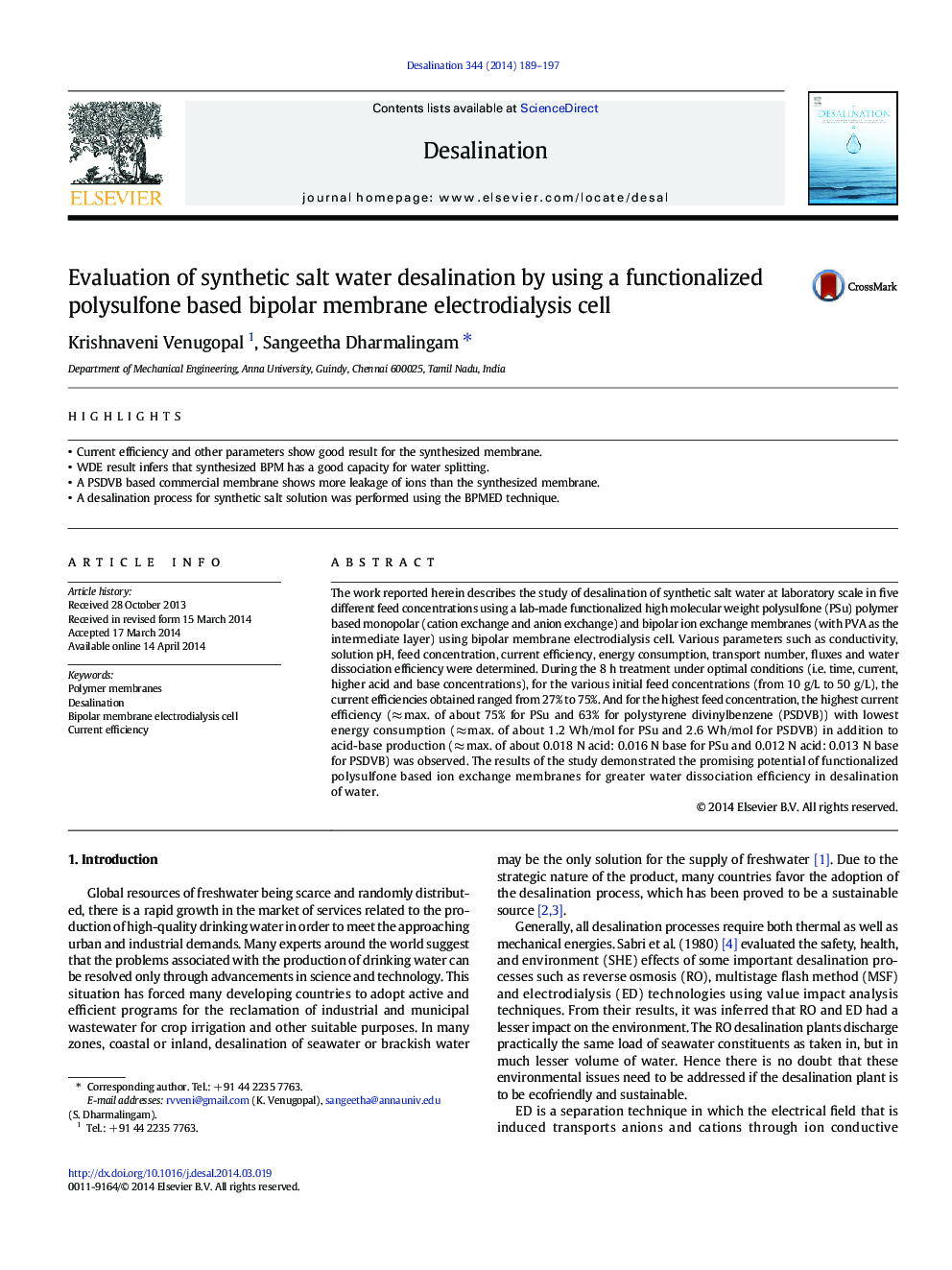| Article ID | Journal | Published Year | Pages | File Type |
|---|---|---|---|---|
| 7008478 | Desalination | 2014 | 9 Pages |
Abstract
The work reported herein describes the study of desalination of synthetic salt water at laboratory scale in five different feed concentrations using a lab-made functionalized high molecular weight polysulfone (PSu) polymer based monopolar (cation exchange and anion exchange) and bipolar ion exchange membranes (with PVA as the intermediate layer) using bipolar membrane electrodialysis cell. Various parameters such as conductivity, solution pH, feed concentration, current efficiency, energy consumption, transport number, fluxes and water dissociation efficiency were determined. During the 8 h treatment under optimal conditions (i.e. time, current, higher acid and base concentrations), for the various initial feed concentrations (from 10 g/L to 50 g/L), the current efficiencies obtained ranged from 27% to 75%. And for the highest feed concentration, the highest current efficiency (â max. of about 75% for PSu and 63% for polystyrene divinylbenzene (PSDVB)) with lowest energy consumption (â max. of about 1.2 Wh/mol for PSu and 2.6 Wh/mol for PSDVB) in addition to acid-base production (â max. of about 0.018 N acid: 0.016 N base for PSu and 0.012 N acid: 0.013 N base for PSDVB) was observed. The results of the study demonstrated the promising potential of functionalized polysulfone based ion exchange membranes for greater water dissociation efficiency in desalination of water.
Related Topics
Physical Sciences and Engineering
Chemical Engineering
Filtration and Separation
Authors
Krishnaveni Venugopal, Sangeetha Dharmalingam,
